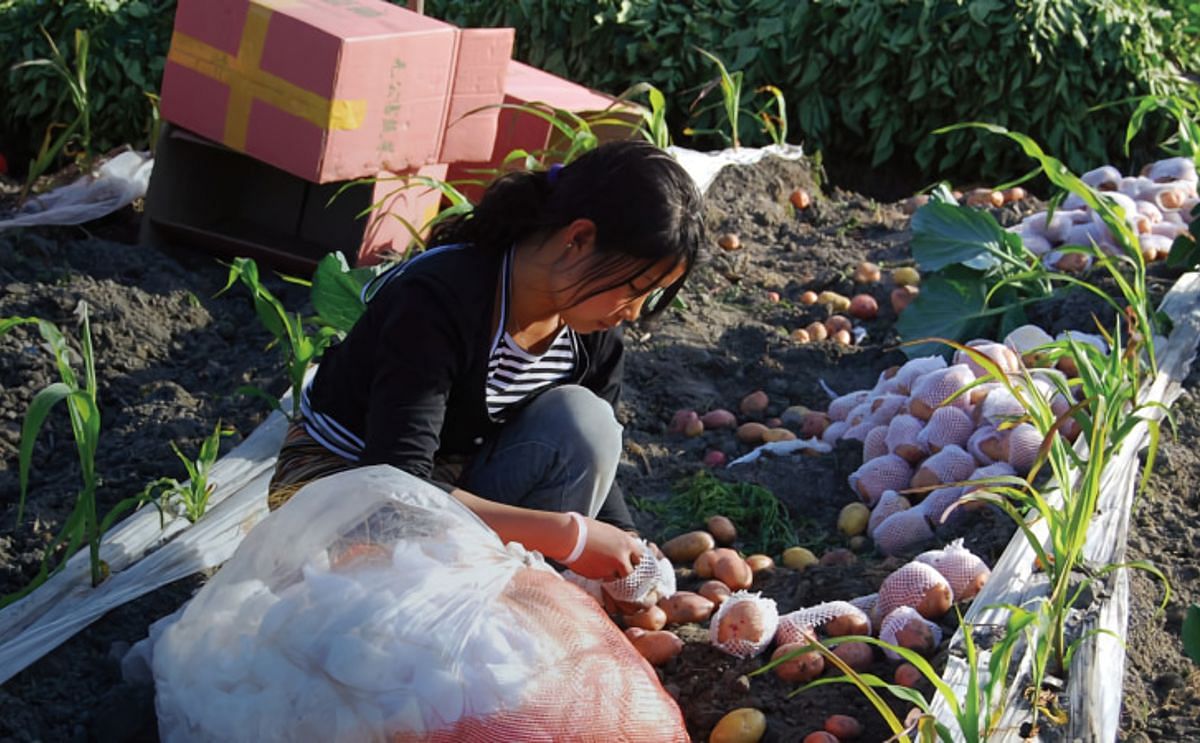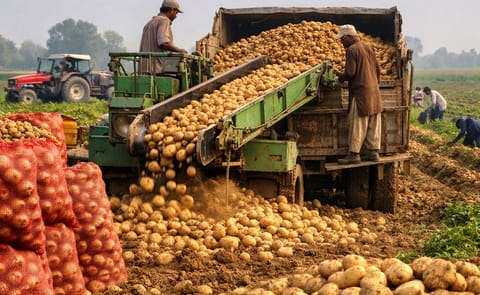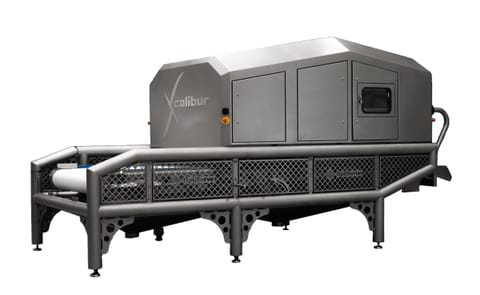Precocious (Early maturing) potato varieties in Asia help deliver benefits to 10 million people
Early maturing potato varieties in Asia help deliver benefits to 10 million people

Across Asia, 170 potato varieties have been released either through the International Potato Center (CIP)’s breeding program over the last four decades or by using germplasm held in its collections.
These varieties are bred to be climate-smart, to mature, and to help fight off potato pests and diseases, contributing to the food and nutrition security, and the livelihoods, of 10 million people across Asia.
Potato is one of the most important crops in Asia where farmers produce 96 million metric tonnes(or 53 million Volkswagen Beetles) of potatoes annually, a number that has increased by 50% over the last ten years in the seven most important Asian potato-growing countries – Bangladesh, China, India, Indonesia, Nepal, Pakistan, and Vietnam.
This success is largely due to the use of improved potato varieties, including those that come from CIP’s breeding program. Today 20% of the land with potatoes across the seven countries is planted with CIP varieties.
Marcel Gatto, an agricultural economist from CIP based in Vietnam:
Precocious varieties take the heat in Bangladesh and India
Guy Hareau, Leader, Social and Nutritional Sciences Division, CIP:
In China, where CIP-related varieties cover 25% of the land planted to potatoes, Cooperation 88 (C88) is helping farmers to beat late blight disease. Late blight costs the global economy up to $10 billion annually in yield loss and agrochemical use.
Between 1996-2016, high-yielding C88 has contributed up to $3.7 billion to the potato economy in Yunnan alone and is one of the most planted CIP varieties in the world.
Guy Hareau:
Oscar Ortiz, CIP Deputy Director General for Research and Development:
Oscar Ortiz:
These varieties are bred to be climate-smart, to mature, and to help fight off potato pests and diseases, contributing to the food and nutrition security, and the livelihoods, of 10 million people across Asia.
Potato is one of the most important crops in Asia where farmers produce 96 million metric tonnes(or 53 million Volkswagen Beetles) of potatoes annually, a number that has increased by 50% over the last ten years in the seven most important Asian potato-growing countries – Bangladesh, China, India, Indonesia, Nepal, Pakistan, and Vietnam.
This success is largely due to the use of improved potato varieties, including those that come from CIP’s breeding program. Today 20% of the land with potatoes across the seven countries is planted with CIP varieties.
Marcel Gatto, an agricultural economist from CIP based in Vietnam:
"Across Asia, the effects of climate change increase longer drought spells and pest and disease outbreaks. This means that we need to breed more climate-smart varieties that can resist existing and novel diseases and that can work in different local conditions."So far, nearly 3 million farming households across these seven countries are cultivating CIP-related varieties.
"We also need to continually find ways to speed up the breeding process so that we can make new and preferred varieties available to farmers as quickly as possible."
Precocious varieties take the heat in Bangladesh and India
Guy Hareau, Leader, Social and Nutritional Sciences Division, CIP:
"We have seen a high take-up rate for our precocious potatoes. These are the ones that mature early and are climate-smart so reduce farmers’ risk of crop failure and income loss."Samarendu Mohanty, CIP’s Regional Director for Asia:
"In Bangladesh, using precocious varieties to sustainably intensify rice agri-food systems could result in economic gains of around $80 million per year, while in India, precocious varieties like Kufri Lima, are helping to secure harvests and livelihoods in increasingly hot temperatures."
"Earlier planting means earlier harvests and a premium price at the market. Wheat and rice farmers can also plant an extra crop during the fallow period which was once considered too hot to grow potatoes."
Drought-loving varieties in Central Asia
Climate change is also increasing the risk to potato harvests posed by drought. Farmers in Kazakhstan, Tajikistan, and Uzbekistan already face severe droughts on average once every five years, which according to climate modeling, are predicted to increase in frequency, severity, and duration.
CIP has worked with the National Agricultural Research Systems (NARS) in Central Asia for several decades to help farmers produce better harvests with less water, developing varieties like UNICA that combine stress resilience with faster production to reduce water consumption.
Rusudan Mdivani, CIP’s Regional Leader for Central Asia:
"Introducing drought-tolerant varieties also means that potato production can extend into new areas increasing the number of families who will benefit from them."Beating late blight disease in China
"For example, UNICA grows well in both mountains and lowlands, making it ideal for the local conditions, and it is resistant to potato viruses which is also a huge challenge for farmers."
In China, where CIP-related varieties cover 25% of the land planted to potatoes, Cooperation 88 (C88) is helping farmers to beat late blight disease. Late blight costs the global economy up to $10 billion annually in yield loss and agrochemical use.
Between 1996-2016, high-yielding C88 has contributed up to $3.7 billion to the potato economy in Yunnan alone and is one of the most planted CIP varieties in the world.
Guy Hareau:
"The main reason that C88 is so popular with farmers is its resistance to late blight. Farmers that grow it have seen yield increases of around 15% and as it is also popular with consumers, which in turn, boosts farmer incomes and provides more incentives to grow it."Looking ahead
Oscar Ortiz, CIP Deputy Director General for Research and Development:
"The high adoption rates we have seen across Asia validates the decades of work by breeders using genetic diversity conserved in the CIP genebank to develop improved potato varietiesv that meet the needs."The latest Food and Agriculture Organization of the UN (FAO) estimates that more than half of the people in the world affected by hunger are in Asia. South Asia is also home to high rates of micronutrient deficiencies such as iron, zinc, and vitamin A which the body needs for healthy development, particularly in young children.
"But the work does not stop here. We need to continue to deliver what farmers need in terms of growing traits, and also look at other benefits that potato can bring, for example to improving nutrition."
Oscar Ortiz:
"We are currently evaluating improved potato varieties that we have biofortified with iron and zinc in several Asian countries. When combined with our work to fill Vitamin A gaps with biofortified orange-fleshed sweetpotato, we see the potential that potatoes can make a difference to improving yields and incomes, and to reducing malnutrition across Asia."
Like to receive news like this by email? Join and Subscribe!
Get the latest potato industry news straight to your WhatsApp. Join the PotatoPro WhatsApp Community!
Highlighted Company
Sponsored Content
Sponsored Content
Sponsored Content
Sponsored Content









